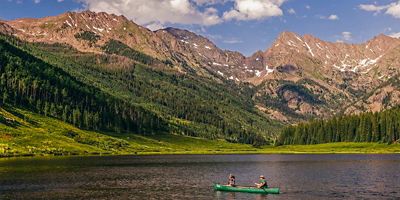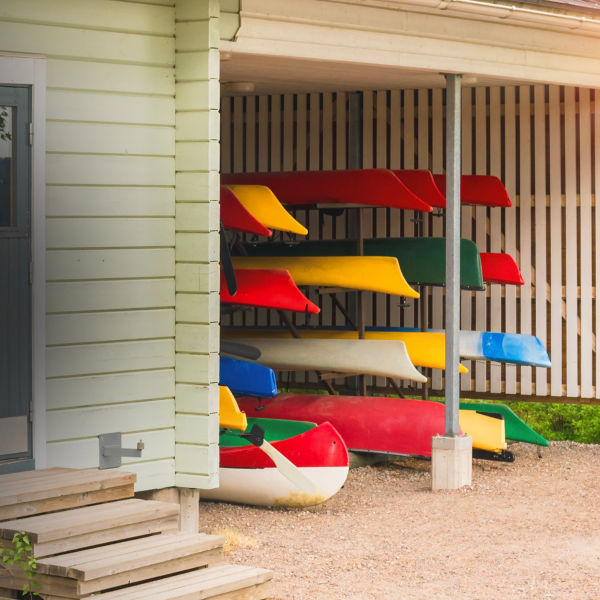
You never know when you might swim or otherwise have to walk in the water or along shore. And you can bet on needing wet-foot traction with almost any launching or landing scenario. That said, there are a lot of options to properly cover and comfort your feet, from neoprene booties to sandals, river shoes and more. Head up to northern latitudes and you’ll even find rubber boots in vogue. Key takeaway: Avoid flip-flops as they tend to fall off once in the water; if going with sandals, ensure they have some sort of ankle or heel strap to keep them in place.
Sandals
Paddling sandals have come a long way from when a resourceful Grand Canyon river guide named Mark Thatcher strapped two Velcro watch bands to a pair of old flip-flops in 1984, giving birth to sandal giant Teva. Today, countless manufacturers make sandals for watersports, running the gamut from heavier, close-toed offerings to more airy designs. Many have multiple tightening points for a secure fit, treaded high-traction outsoles, as well as quick-drying fabric and even drain holes. Consider their intended use when making your purchase. If you’ll be hiking a lot, a closed-toe option might be best; if simply for floating, quick-drying sandals might do the trick. Key point: Try them on before you buy and walk a few paces. You might notice a rub in the ankle or toe as soon as you start moving.
Booties
Neoprene wetsuit-like booties are great for both protecting your feet and keeping them warm. It’s the latter that’s their main attribute over sandals; if you’re planning on paddling in cold water or weather, they might be your best option. Different from neoprene socks, which don’t have a beefed-up sole for protection and traction, paddling booties come in all shapes and sizes, usually with zippers along the sides for access. They also have rubberized treads along the bottom for traction on wet rocks. Some include Velcro and/or other straps across the ankle for additional support. Another advantage of booties is that they have a smaller footprint, making them better for watercraft with tight cockpits such as whitewater kayaks where foot space is at a premium. Their only drawback: They don’t let your feet breathe as well as sandals, meaning you can’t wait to air out your tootsies once you’re through with the day’s paddle.
Shoes
River- and paddling-specific water shoes are a heavier-duty version of a sandal, almost resembling more of a tennis shoe. But they’re designed with aquatic immersion in mind, featuring rugged soles, quick-drying mesh as well as drain holes, and often integrated insoles, straps, buckles and lace-tightening systems. Because your toes are covered and they have more ankle support, they offer more protection against rocks than your typical sandal, making them great for when you know you’ll be hiking as well as paddling. The downside is that they don’t dry as quickly as river sandals, and usually cost a bit more.
Boots
Paddle up north in locations like Canada and Alaska and knee-high rubber “gumboots” often supersede booties or sandals on the water. Often used while sea kayaking, they’re burlier and more durable, and usually have deeper treads on the sole for walking over water-covered rocks. As long as you keep the insides dry and combine them with wool or other synthetic socks, they’re also much warmer. The downside is that they’re clammier—and if you step in over the boot top, your feet get wet for the duration of your paddle outing.



















